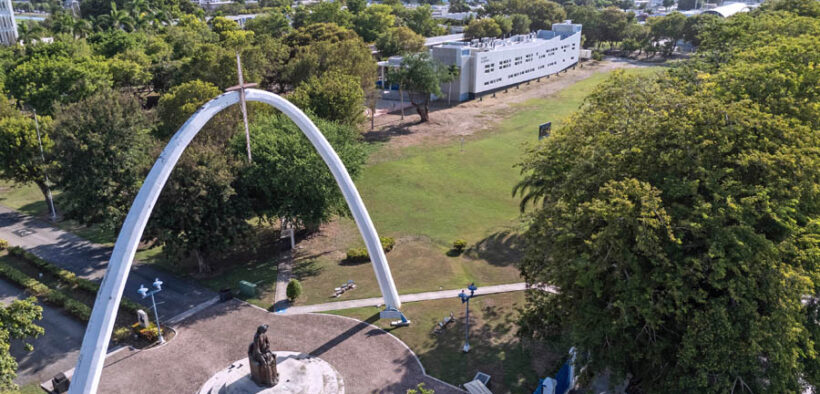PUCPR invests $13M in new science building

The Pontifical Catholic University of Puerto Rico (PUCPR) has completed the Dr. Gabriel A. Infante Méndez Science Laboratory Building, a $13 million project that adds more than 30,000 square feet to its Ponce campus. The facility opens this semester and strengthens the university’s science, technology and nursing programs.
“This expansion of our academic offerings in the sciences … and this new science building reinforce our commitment to the highest level of education and service to the communities since our founding,” said university President José A. Frontera-Agenjo. “Precisely because of the urgent need to meet the need for nurses and teachers on the island, our first colleges were dedicated to science and education.”
Modern labs, learning spaces
The building features advanced biology and chemistry labs with advanced technology, as well as renovated Nursing Simulation and Noninvasive Cardiovascular Technology labs. These will support programs in biology, biotechnology, environmental sciences, chemistry, biomedical sciences, medical technology, nursing and applied data science.
“The new building houses modern, state-of-the-art laboratories for biology and chemistry courses,” said Alma L. Santiago-Cortés, dean of the College of Sciences. “This multimillion-dollar investment in infrastructure will enrich the practical experience and academic development of students.”
Smaller class groups will improve individualized learning. The building also enables rehabilitation of physics labs in the Antonio Ferré Building.
Energy resilience, infrastructure
“The building is the spearhead of the renovation of all the science facilities on campus. Its state-of-the-art construction, in addition to laboratories and offices, features study and reflection spaces,” said Armando Rodríguez-Torres, vice president of Infrastructure Development at PUCPR.
“It includes a new 500-kVA substation and an emergency power generator. Additionally, it was designed and built to accommodate solar panels, considering the use of renewable natural energy as part of our energy conservation and resilience initiative, which will be implemented soon,” Rodríguez said.
A legacy of scientific education
Since its founding, PUCPR has emphasized science and education programs. The bachelor of nursing program, established in 1956, was the first on the island and has remained accredited since 1963.
The bachelor of medical technology program has been offered since 1968 and the master of nursing program since 1991.
The Ponce campus currently has six additional buildings and three science research centers, including the Alfonso Valdés Building, the Medical Technology Building, and the Antonio Ferré Building, as well as the Padre Tosello Research Center, the Environmental Sciences Center, and the Center for Education and Research in Biotechnology and Agrobiotechnology (CEIBA).
These centers provide research opportunities in areas such as biology, chemistry, environmental sciences, biomedical sciences, and agrobiotechnology.
Interdisciplinary research, impact
PUCPR continues to develop interdisciplinary projects with a focus on real-world applications. Teams are engaged in biotechnology research with agricultural applications to support food security, including plantain and citrus initiatives developed in collaboration with the Puerto Rico Department of Agriculture.
Faculty-led projects also include innovations such as the use of virtual reality in physics laboratories through federally funded initiatives. These efforts create opportunities for undergraduate and graduate students to gain practical research experience while pursuing future studies locally and abroad.
“Since I joined the dean of sciences 12 years ago, I have always emphasized developing lines of research with projects that can address the needs of our society, placing special emphasis on research collaboration in the interdisciplinary field,” Santiago-Cortés said.




